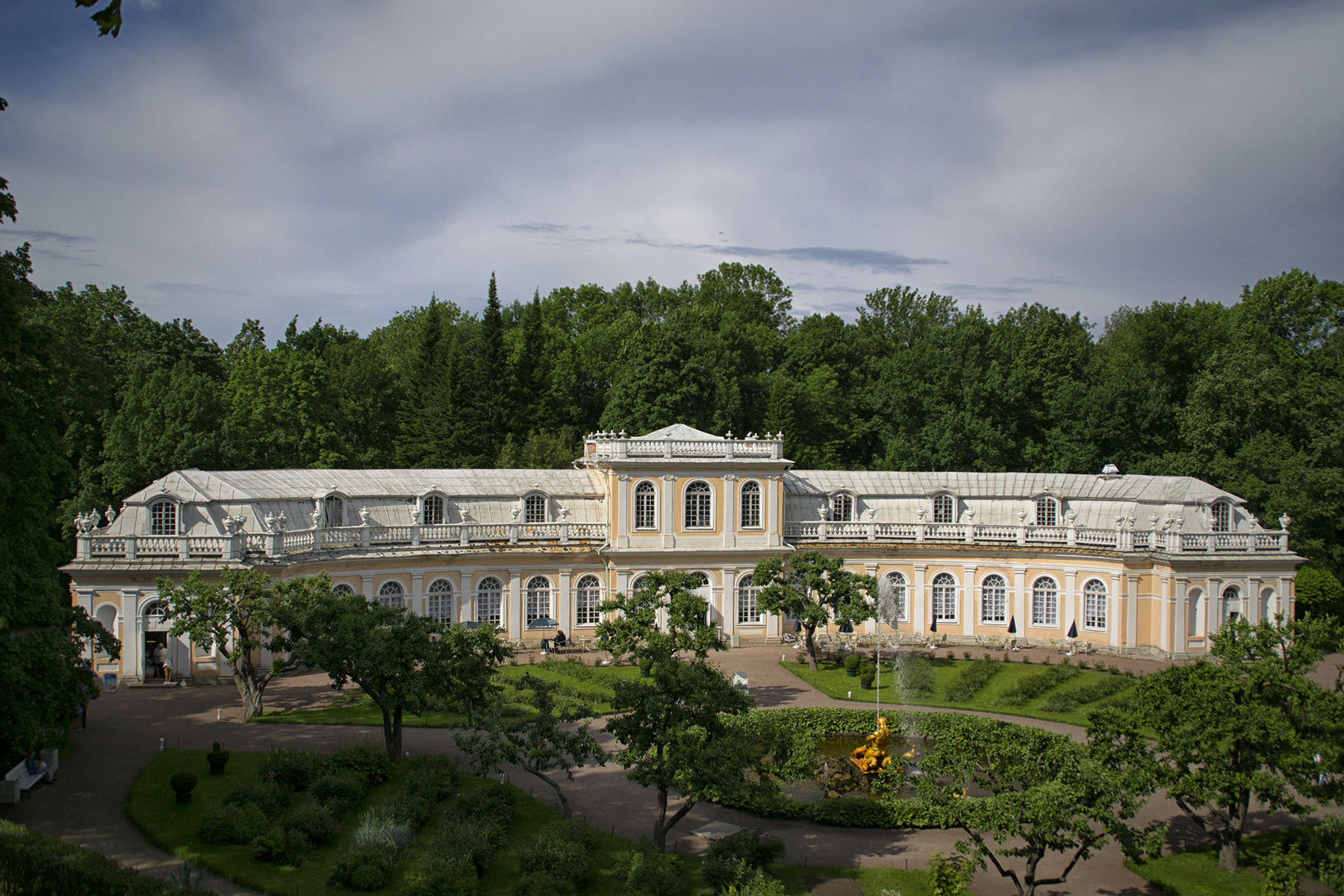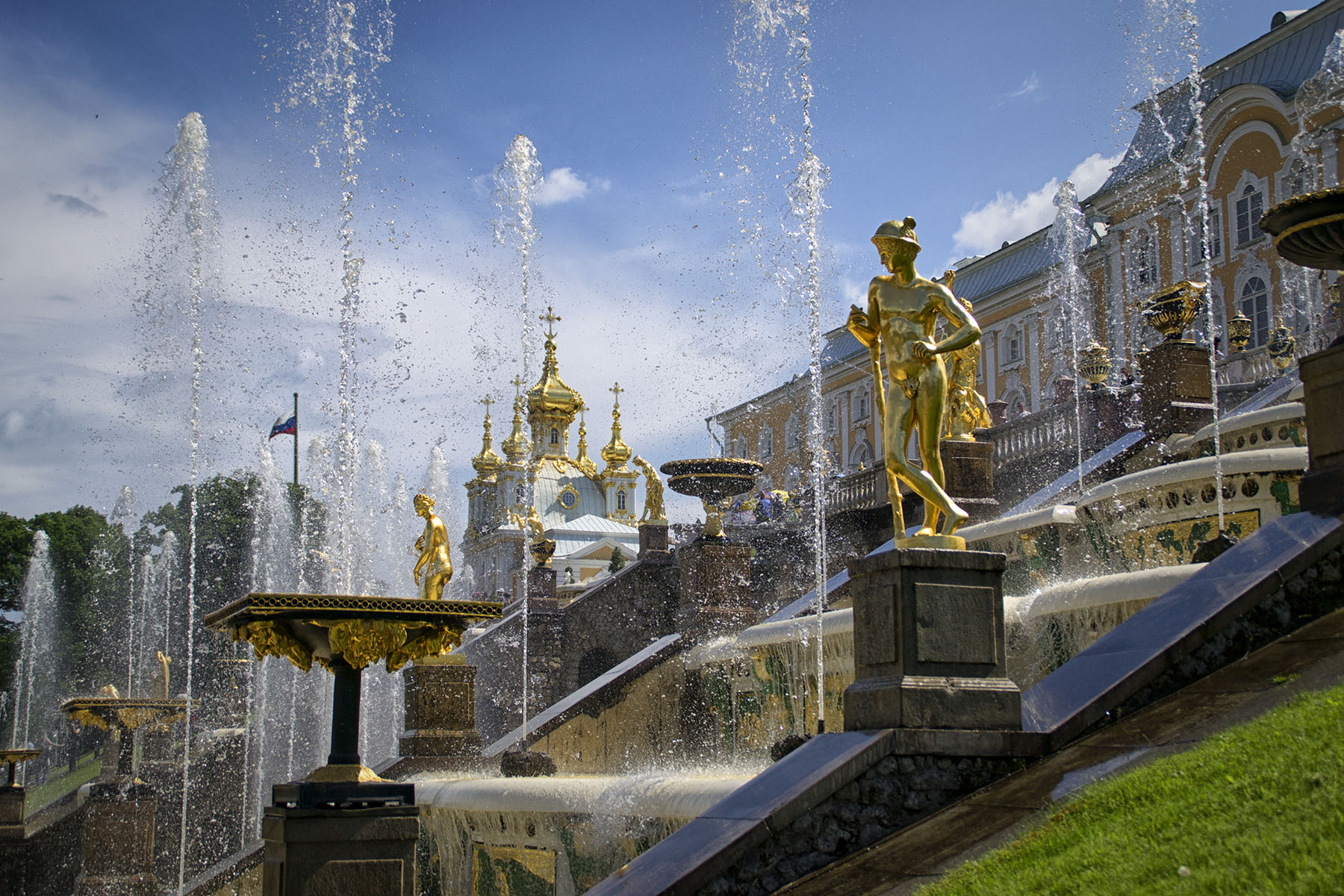
Today’s post is yet again dedicated to my trip to St. Petersburg. It's such an amazing city that, perhaps, you can talk about what it has to offer endlessly. However, I do promise that there are only a couple more St. Petersburg posts left in me. At least until my next visit to the northern capital (one of the informal names of St. Petersburg).
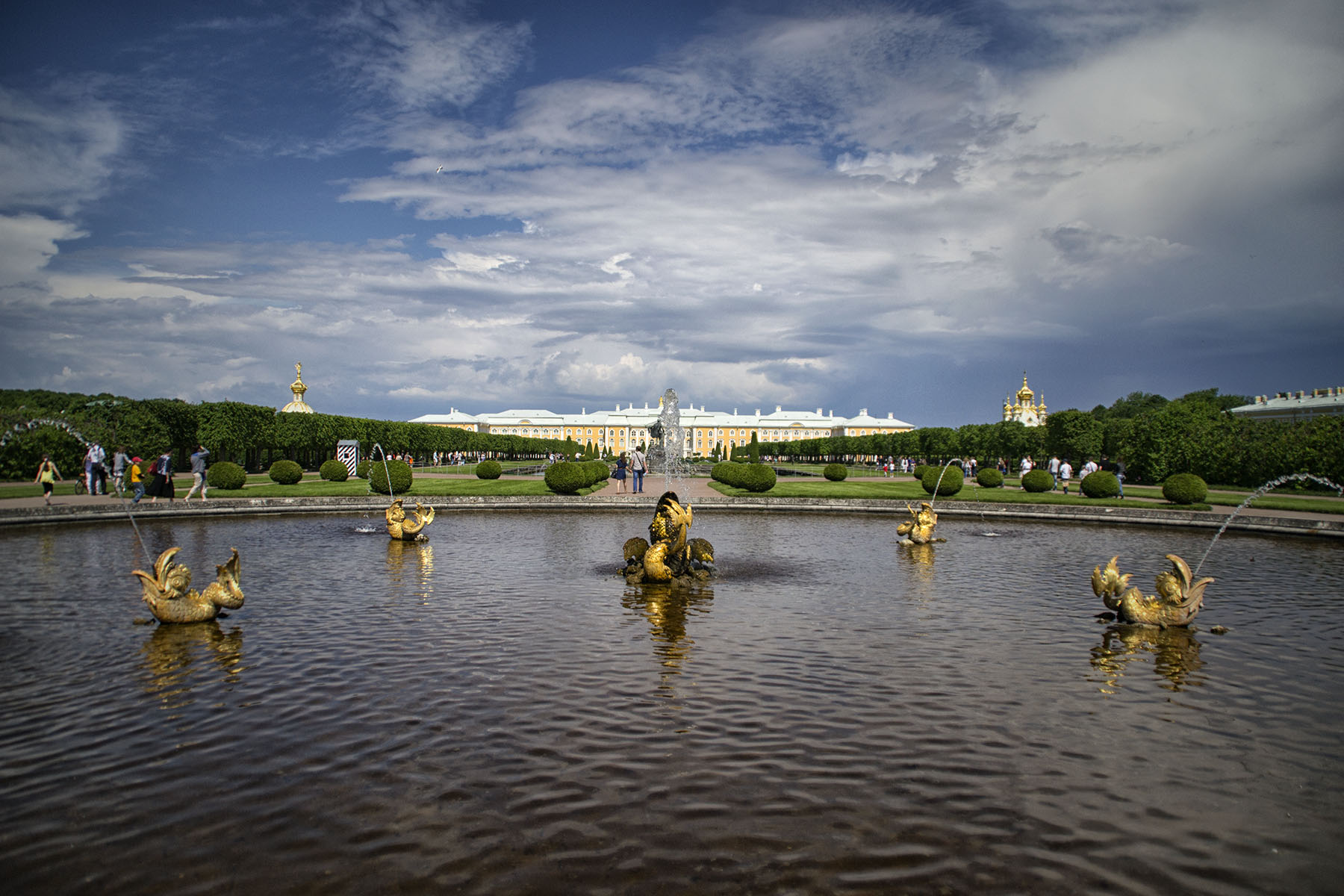
Today I would like to talk about a suburb of St. Petersburg named Peterhof. In Dutch language, Peterhof is translated to “Peter’s Court”. This place is first mentioned in the travel journal of Russian emperor Peter the Great, who was the founder of Peterhof. Starting with the reign of Peter the Great, back in 1710's, landscape and architectural works were initiated in order to improve the look of the estate. Peterhof is structurally divided into two parts: Upper and Lower Parks. The planning structure of Peterhof brilliantly combines the symmetry of the overall composition with the natural terrain and introduces individual sections with parks, pavilions, and fountains.

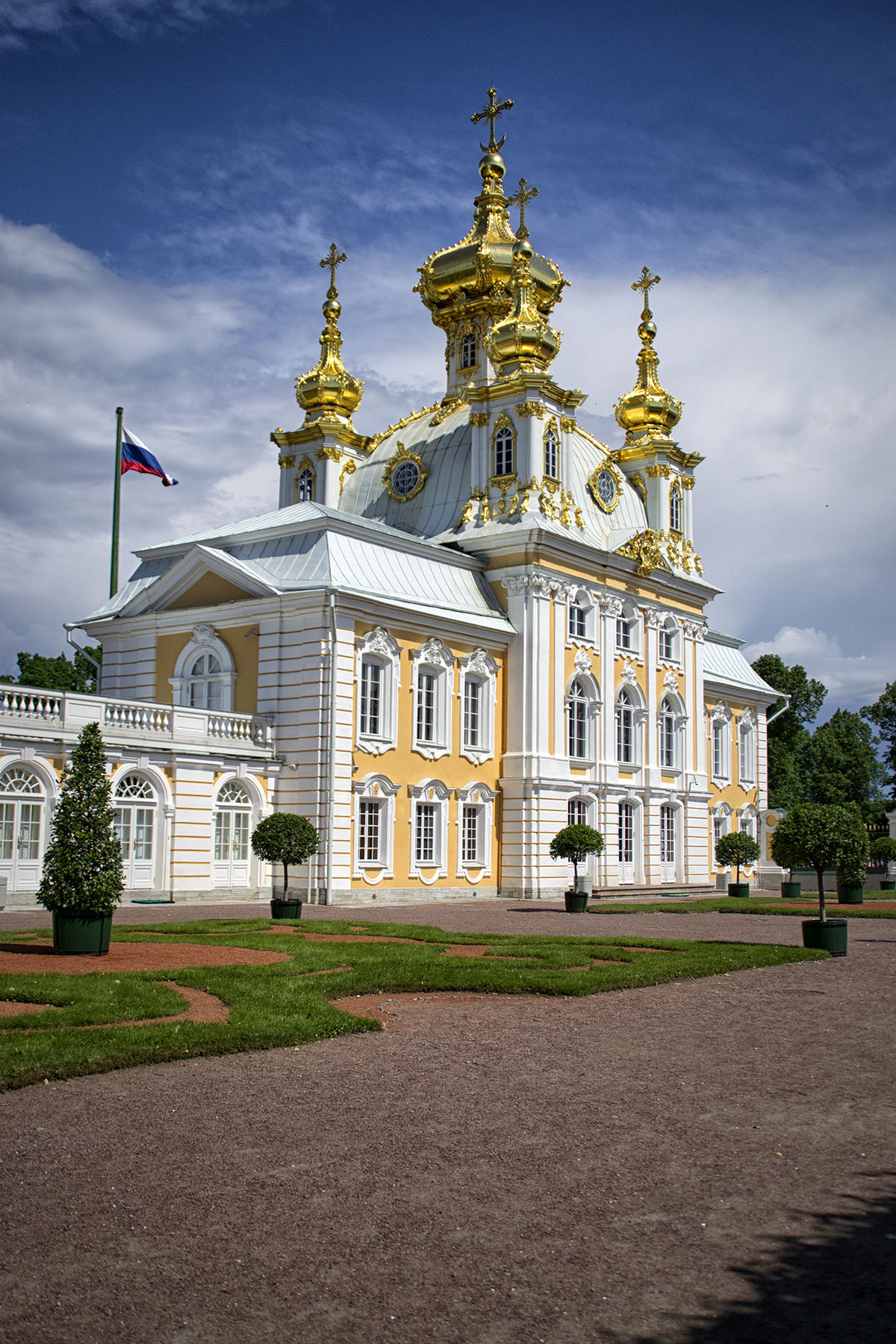
For several centuries Peterhof served as a residence for the ruling Romanov dynasty. After the revolution of 1917, however, the monarchy was overthrown and Peterhof lost its status of the royal residency. The Bolsheviks who came to power after overthrowing the royal family made Peterhof a state museum instead.The first tour of the palace and surrounding area took place in 1918. And here I was, almost a century since it’s opened to general crowd.
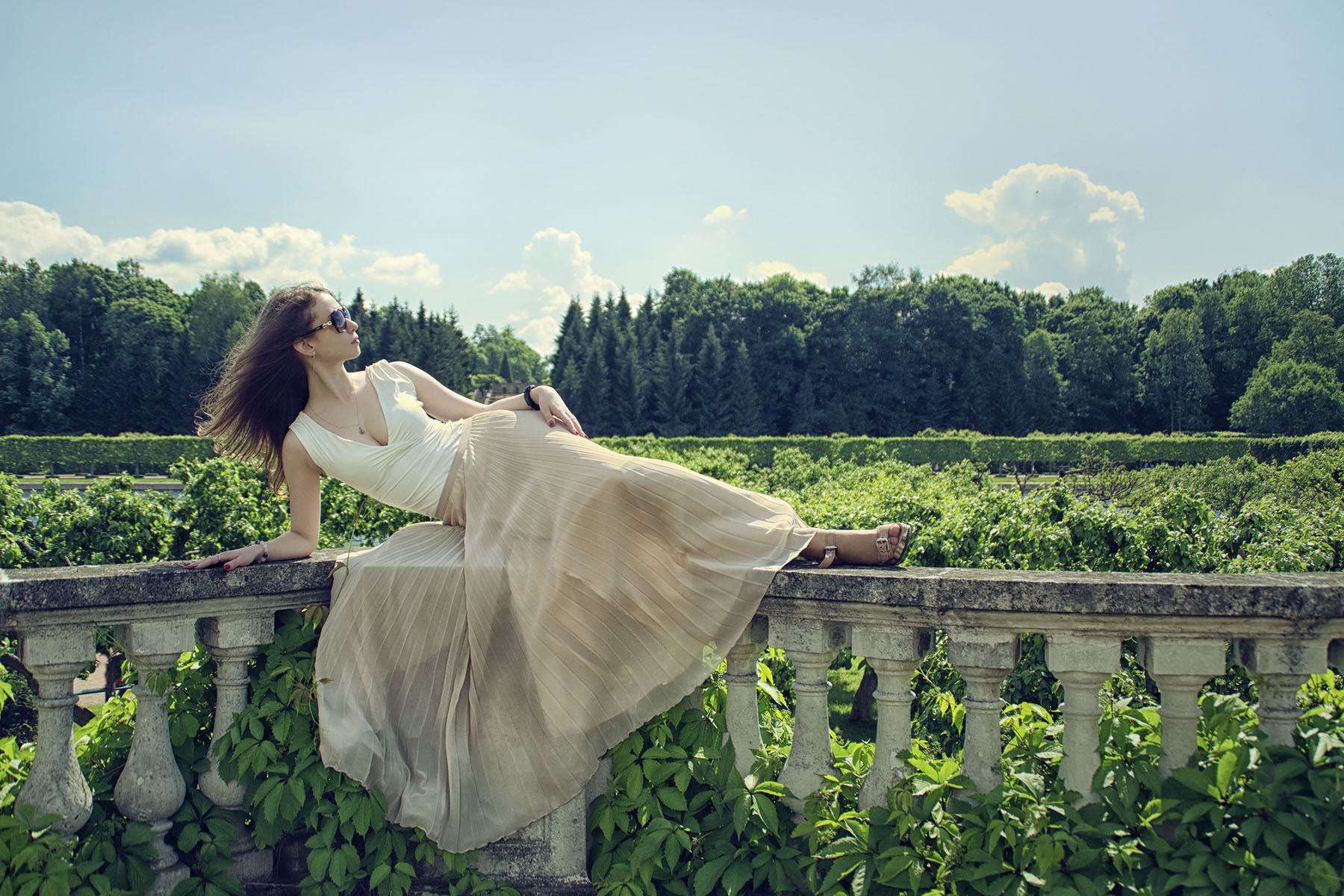
My sightseeing of Peterhof began with the Upper Park. It is located on the terrace of the southern facade of the Grand Palace and it is a main entrance to the former residence of Russian emperors. The park contains a number of fountains - "Oak", "Neptune","Mezheumny" (I apologize, but I can’t come up with an appropriate translation for this name) and others. The first fountain the visitors see is "Mezheumny" or, as it is also referred to, "Uncertain" fountain. This fountain got such a strange name due to multiple shifts in its sculptural decoration. This fountain was followed by the main fountain in the Upper Garden - "Neptune". “Neptune” is a compositional center of the park. As you can tell, there will be a lot of talking about the fountains in this article. It is not because I am a fountain enthusiast, but rather because there are more than 150 fountains in Peterhof. In order to supply all of these fountains with enough water, the architects built a special aqueduct that is 25 miles (40 km) long. There are 18 ponds located on the slopes of this aqueduct that are used for storage of water. These ponds hold more that 1.3 million cubic meters (that’s 46 million cubic feet!) of water and cover an area of almost 100 hectares (247 acres).
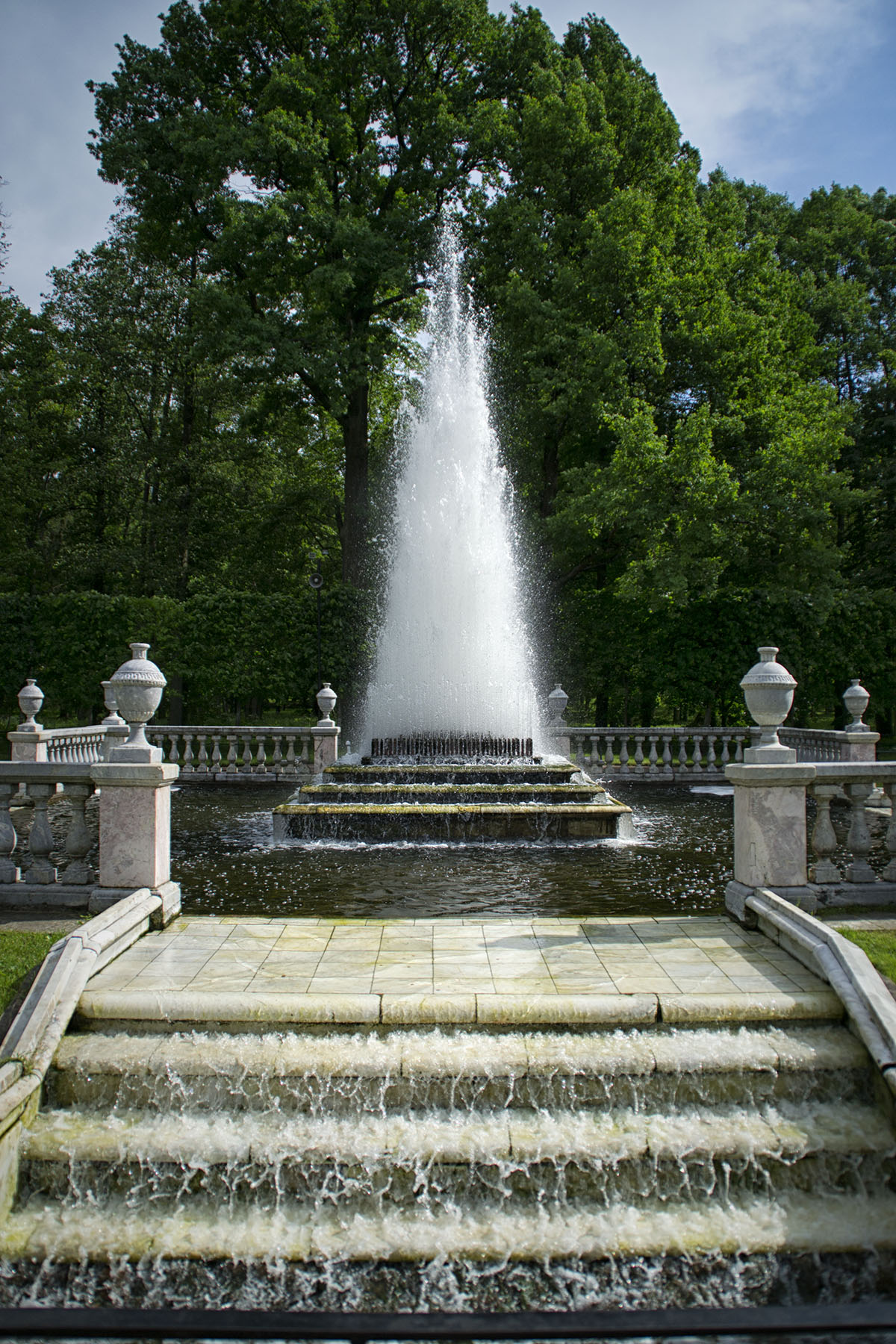
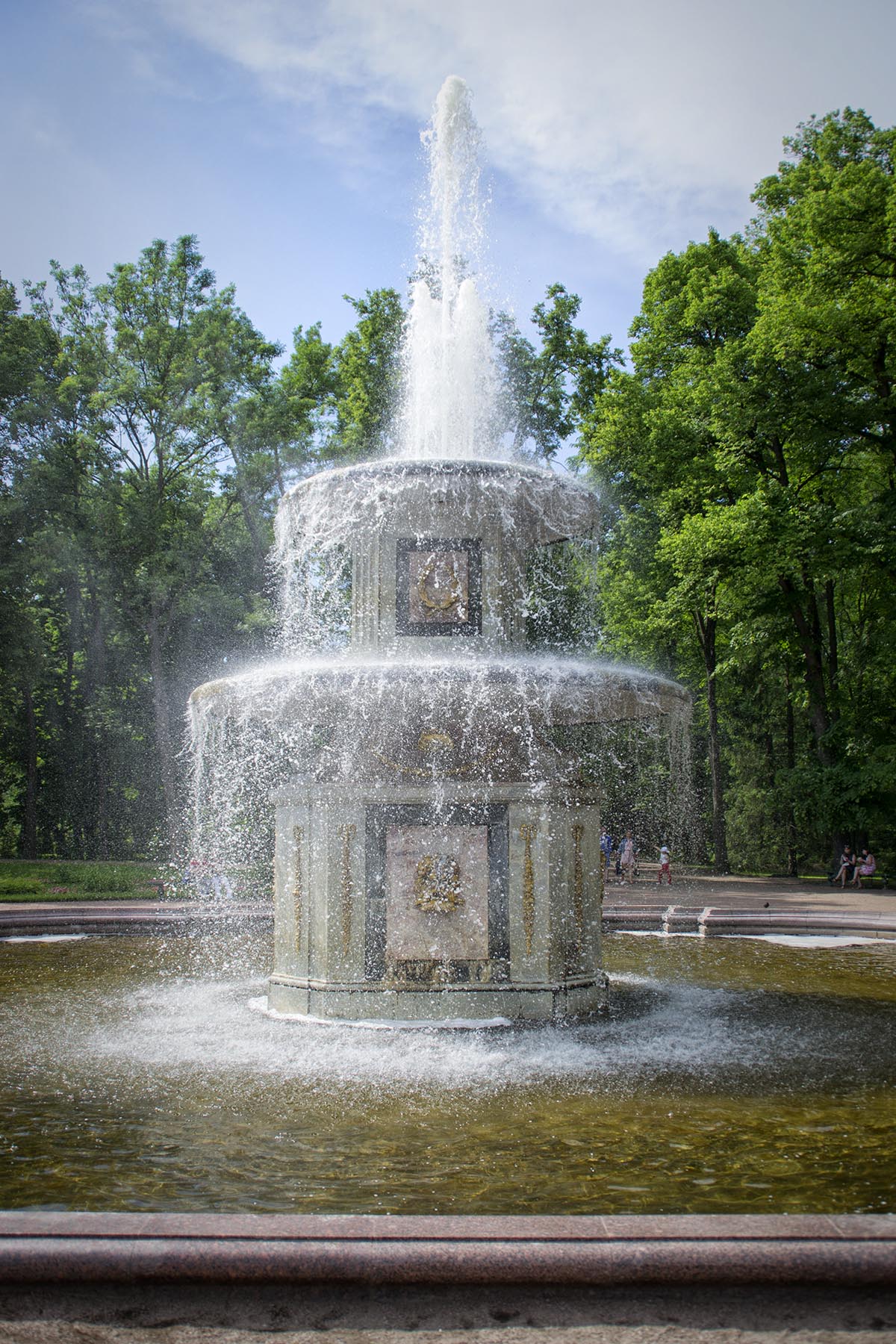
In addition to the fountains, the park’s landscape offers statues, ponds, and gardens. The landscape and the outline of the park were designed by Peter the Great himself, and the appearance of the park was changed only slightly since then. Reaching the end of the park, and in awe with its magnificence, I got to the Grand Cascade. The Grand Cascade is one of the largest fountain ensembles in the world, consisting of more than 60 fountains, as well as 250 statues. Peter the Great came up with an idea to create such a complex structure after he visited the royal residence of French king Louis XIV. He decided not only to create something like that in his homeland, but to surpass the French king. I have not been to Versailles, but after seeing the incredible beauty of the Grand Cascade, I'm sure the Russian monarch accomplished this task.
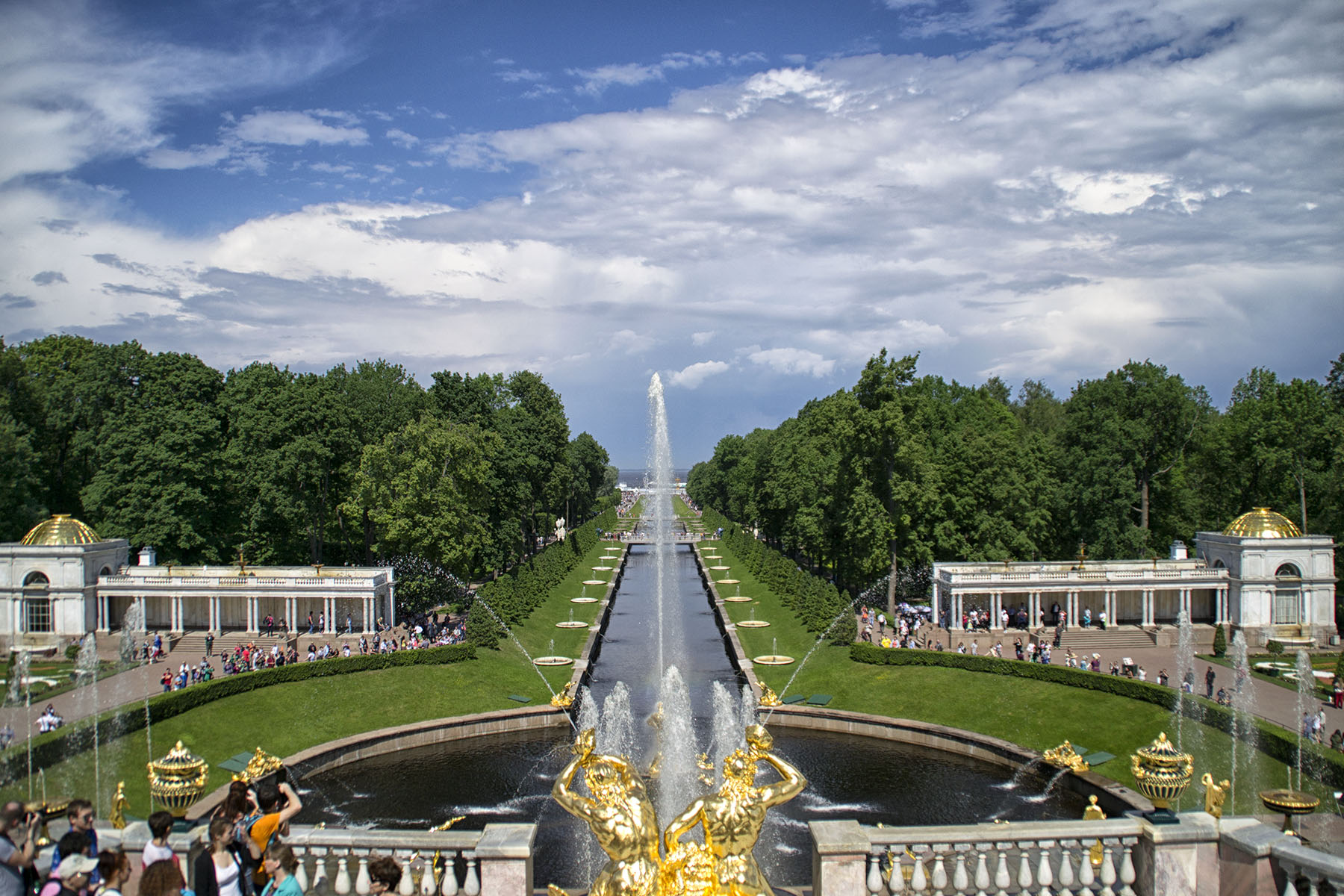
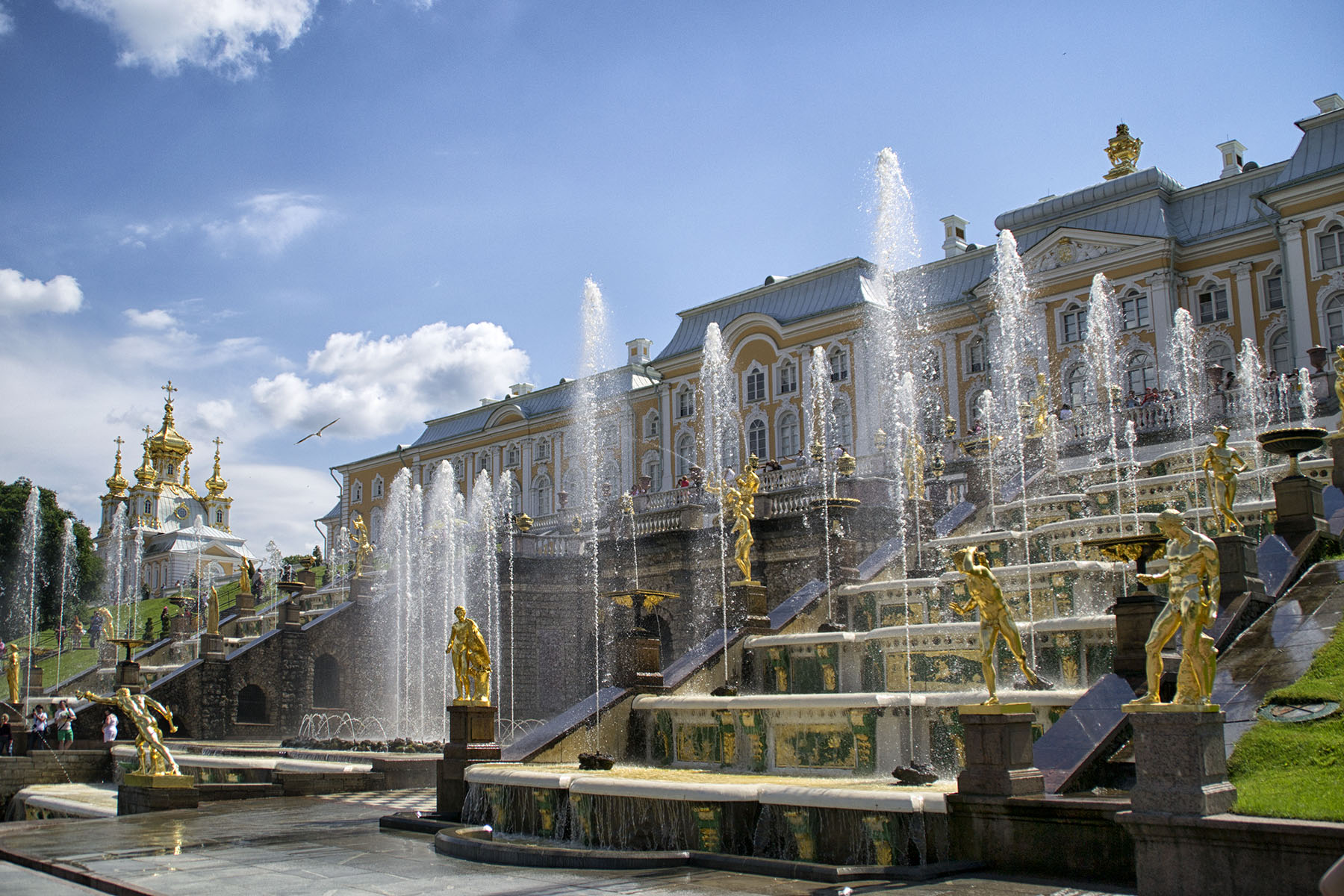
Unfortunately for me, I was unable to get a postcard like photo of the fountains. This was not due to the technical difficulties but rather due to people consistently being in the frame of my camera. There is a massive number of tourists in Peterhof as it is the biggest sightseeing attraction in St. Petersburg. The most important part of the Grand Cascade is a fountain named "Samson." It was installed in the center of the ensemble in 1735 by order of Empress Anna in honor of the anniversary of the Battle of Poltava (1709). Bursts of water escaping from the lion's mouth reach a height of about 21 meters (70 feet). It is a fascinating sight. After spending quite some time by the Grand Cascade, I finally reached the Lower Park. It is located between the Grand Peterhof Palace and the Gulf of Finland. If you think that the size of the Upper Park was great, then you are greatly mistaken. The upper portion of Peterhof covers the territory of “only” 15 hectares (37 acres), while the Lower Park is spread across 113 hectares (280 acres).
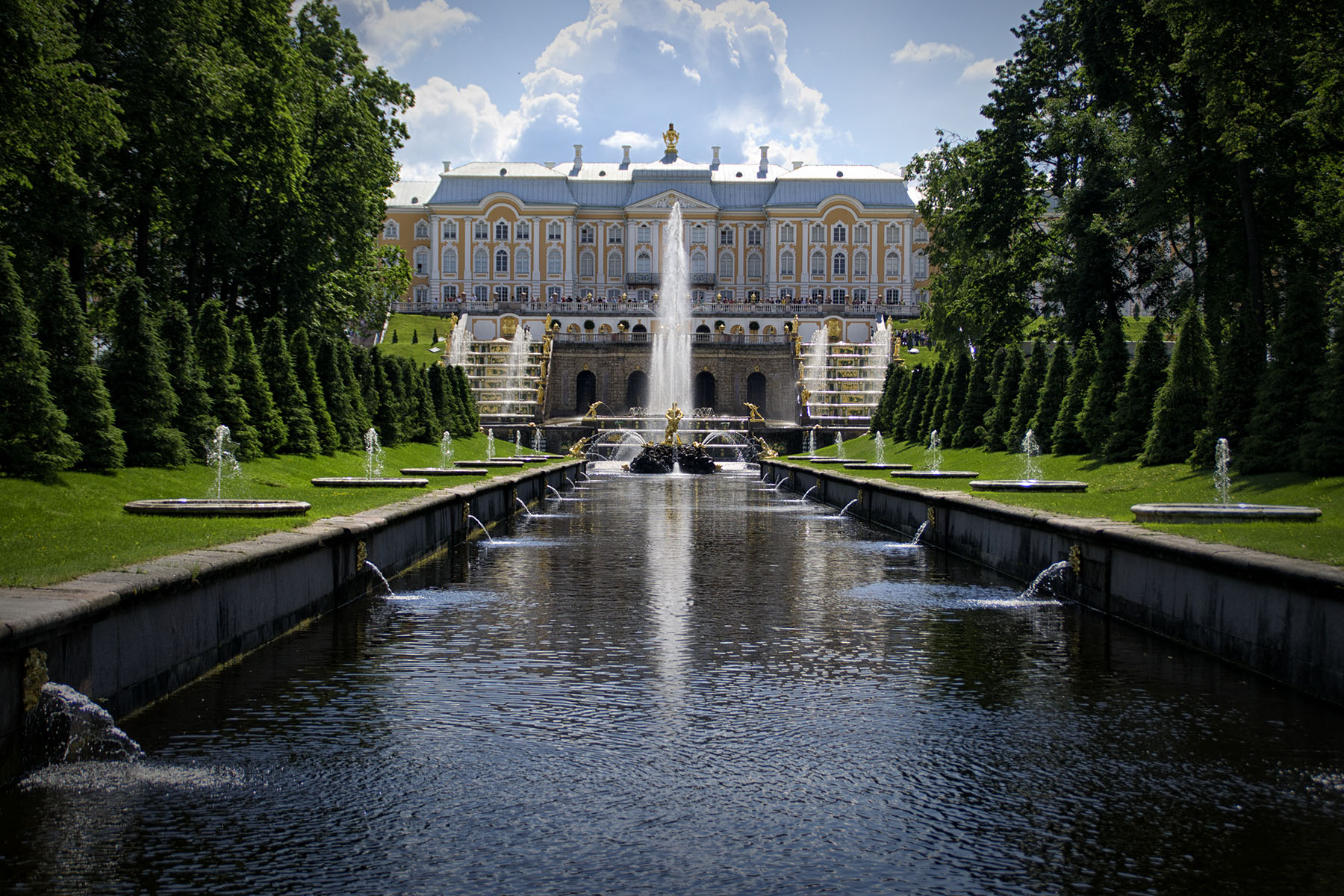
To see every inch of the Lower Park was a task on the verge of “Mission Impossible” combined with “Die Hard”. I can be proud of myself, however, as I went and visited every single fountain located in the vicinity of the lower area of Peterhof. Although, I do admit, that the last fountain I went to was not at all worth it. In addition to the countless fountains (well, okay, you can count them, there are 150) in the Lower Park there are several architectural ensembles that include small palaces and structures, sculptures, flower beds, and ponds. All of them are harmoniously woven into the overall layout of the park.
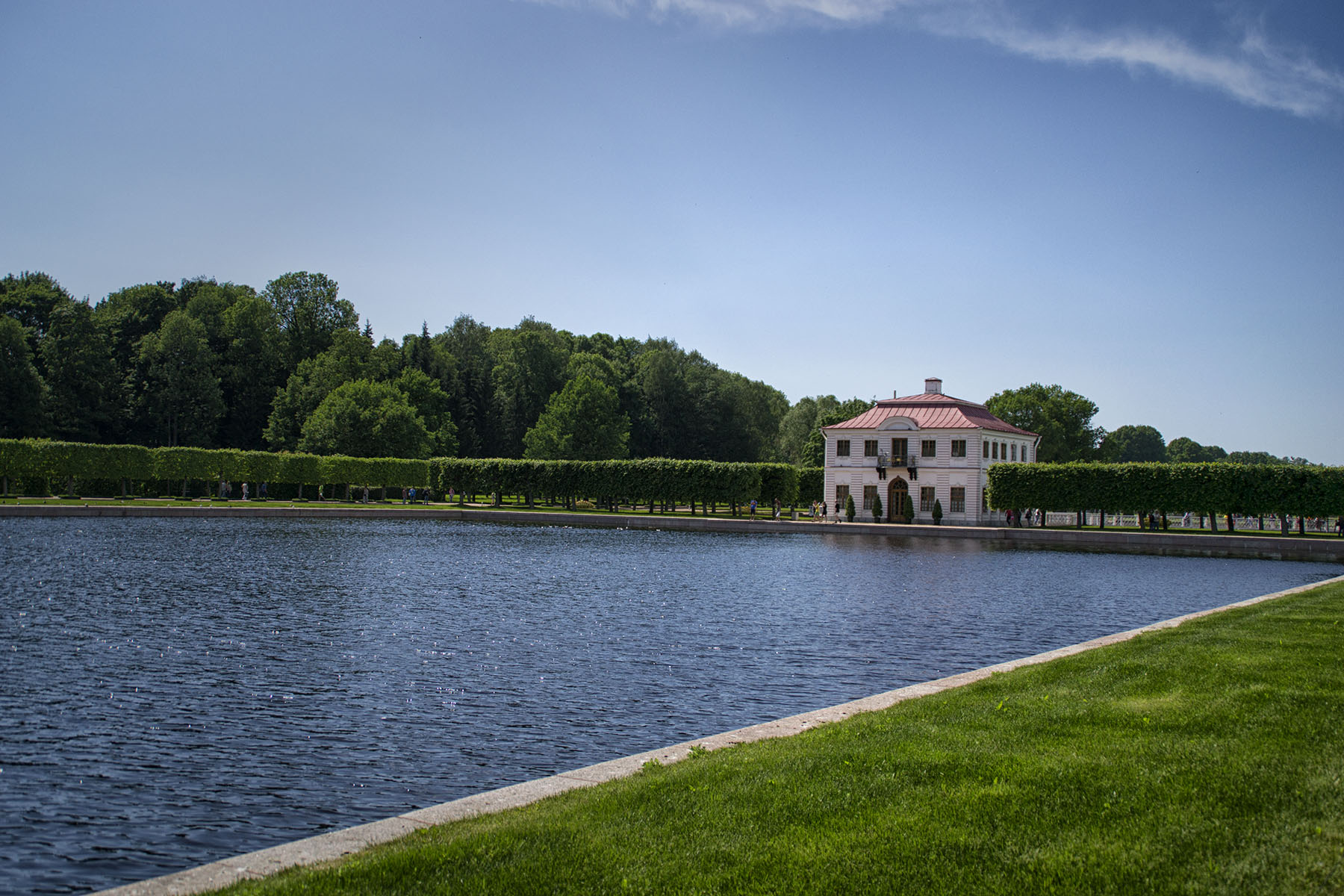
Visiting Peterhof left me with mixed feelings. I was in a lot of physical pain due to blisters on my feet that were the result of all the walking. On the other hand, I was delighted I got to see such a unique beauty. I hope that my photos can help you experience the splendor of Peterhof, even if it will be just a fraction of what I have felt walking around this historical marker.
